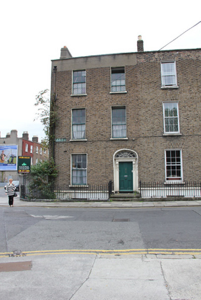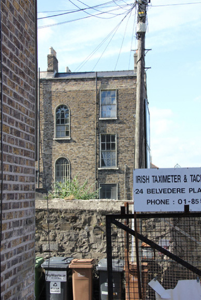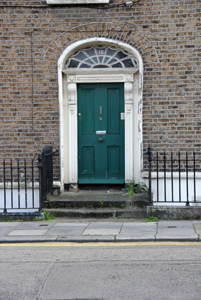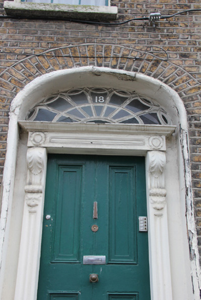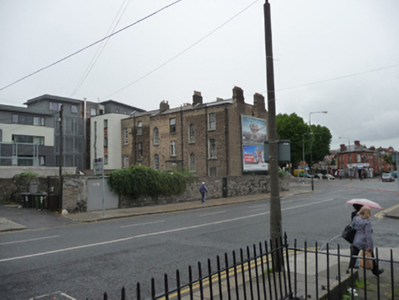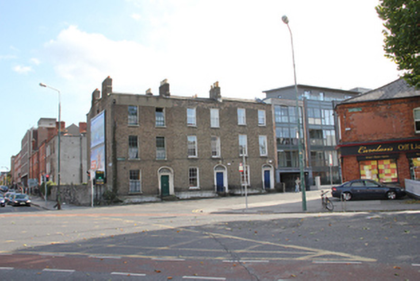Survey Data
Reg No
50010732
Rating
Regional
Categories of Special Interest
Architectural, Artistic
Original Use
House
Date
1820 - 1840
Coordinates
315976, 235699
Date Recorded
05/09/2011
Date Updated
--/--/--
Description
Corner-sited end-of-terrace two-bay three-storey house over raised basement, built c.1830, currently vacant. M-profiled pitched artificial slate roof with central valley set behind rendered parapet wall and having stepped rendered brick chimneystacks. Brown brick walls laid in Flemish bond on painted granite plinth course and rendered basement wall. Original cast-iron rainwater goods, with cast-iron brick vent and enamelled green and white street sign at first floor corner, onto Upper Sherrard Street. Gauged brick flat-arched window openings with patent render reveals, painted stone sills and original six-over-six timber sliding sash windows. Rear elevation also having original timber sliding sash windows with two round-headed windows to stair. Gauged brick three-centred arched door opening with moulded masonry surround and decorative timber doorcase. Original flat-panelled timber door with brass furniture flanked by slender panelled pilasters and foliate scrolled console brackets supporting panelled lintel cornice and original cobweb fanlight. Door opens onto sloping granite-flagged platform, bridging basement area, with iron bootscraper, enclosed by original wrought-iron railings and opening onto pavement via two granite steps. Basement enclosed by original railing on painted moulded plinth wall with square-headed window opening having ten-over-ten pane timber sliding sash window and iron grille. Random rubble calp stone boundary wall to Belvedere Place.
Appraisal
This end-of-terrace late Georgian townhouse is notable for its fine doorcase, with a pleasant fanlight, and for the retention of timber sash windows. Its railings to the basement area, and the granite steps, provide an appropriate setting. It stands prominently at the junction of Belvedere Place and Upper Sherrard Street, the latter developed in the 1820s by Thomas Sherrard, surveyor for the Wide Street Commissioners. Despite being vacant and in poor repair, the building retains a wealth of original fabric and together with the adjoining two houses, presents an early aspect to this Georgian streetscape. In addition, the prominent location and visibility of its rear and side elevations on a major thoroughfare contributes to the visual appeal and rhythm of the surrounding streetscapes.

